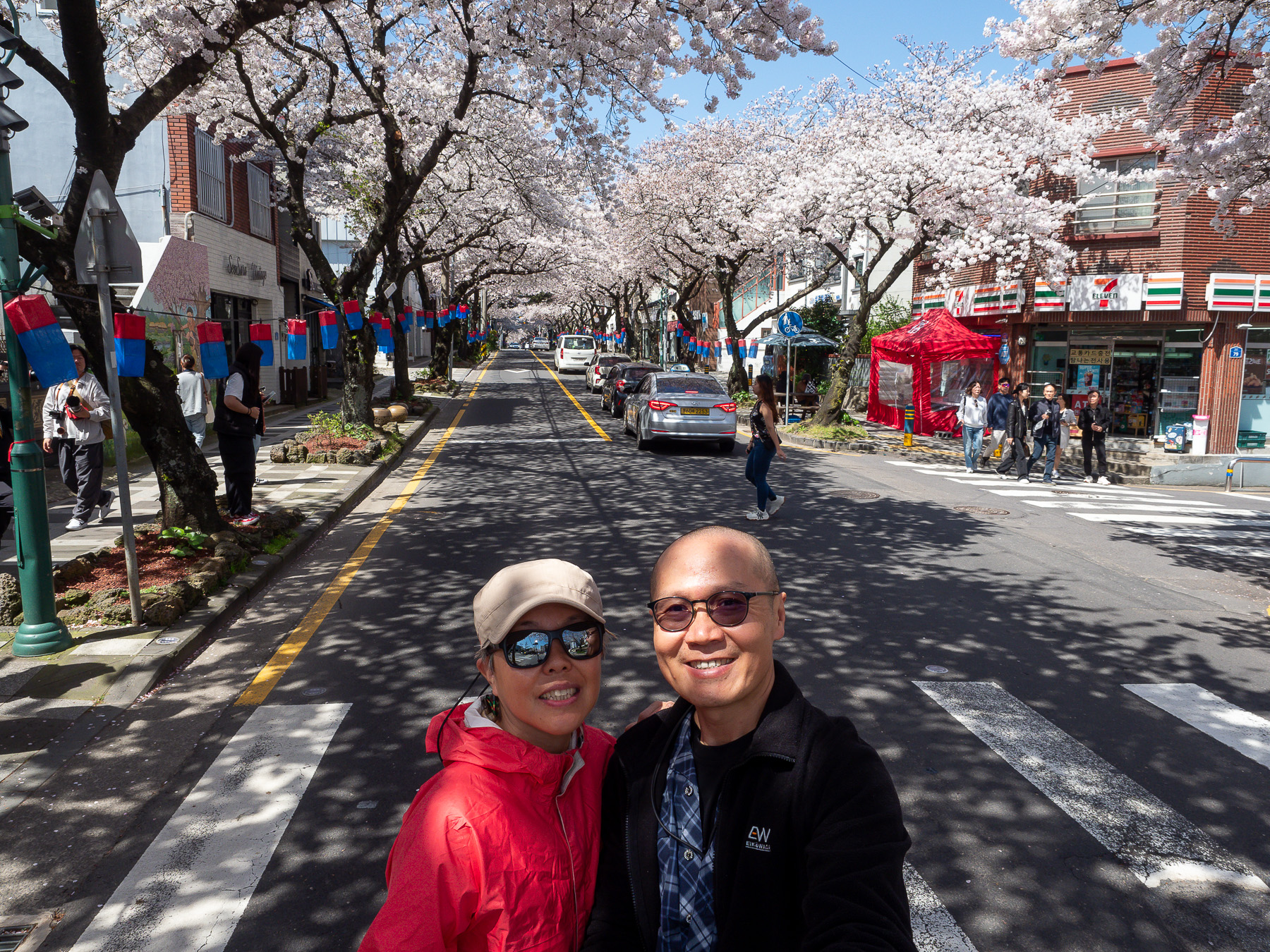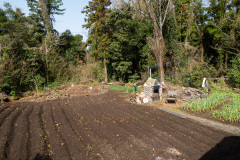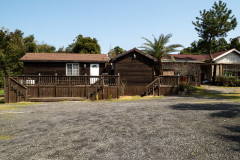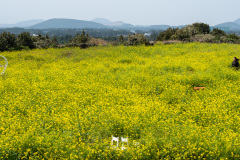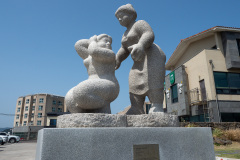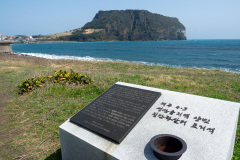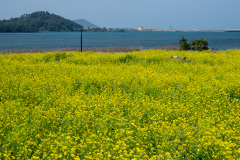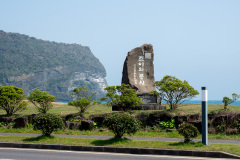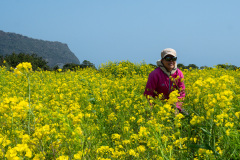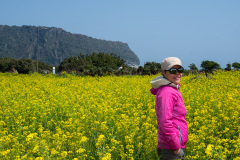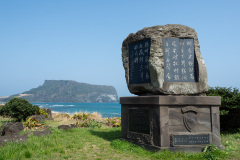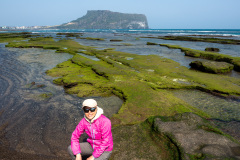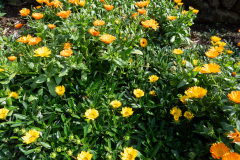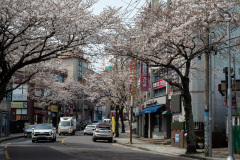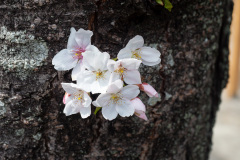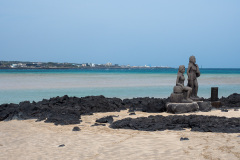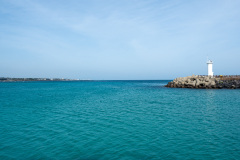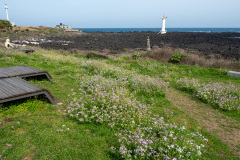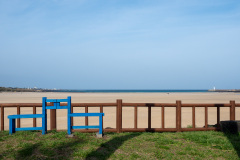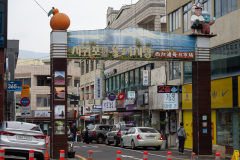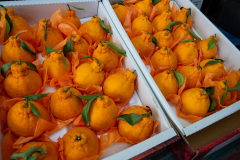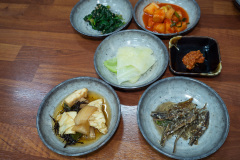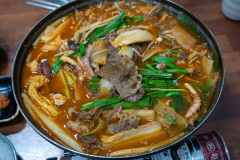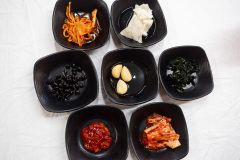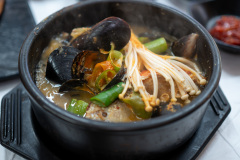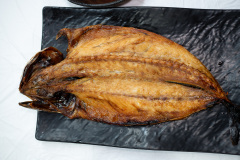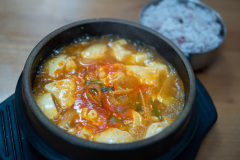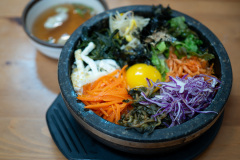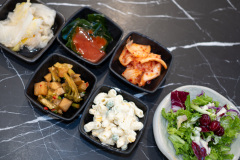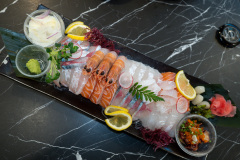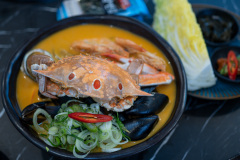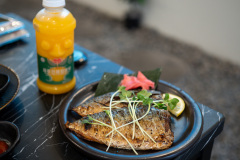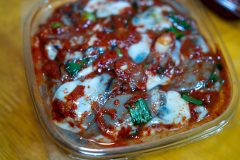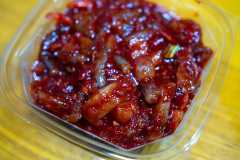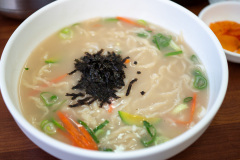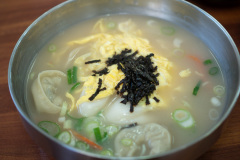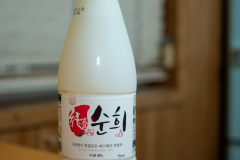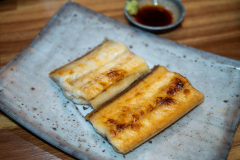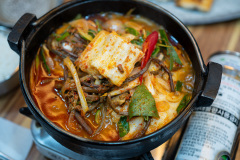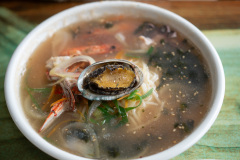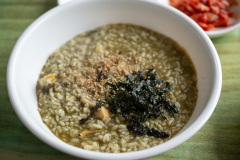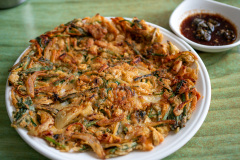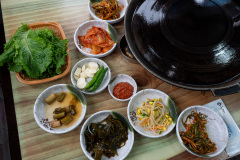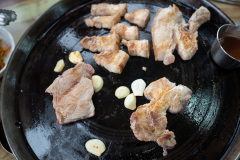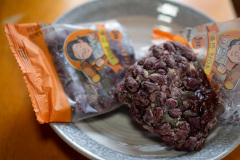Jeju – 28 Mar – 9 Apr 2024
Say hello to another overdue post-travel blog entry! Eventually I have found some time to write.
Our first visit in Jeju was way back in the winter of 2010. It was so cold and snowed so heavily at times that tropical creatures like us couldn't fully enjoy the trip. But there's something so special about the island that all these years we'd been dreaming of returning. Perhaps the stunning sceneries, crystal clear waters, or something else? Actually we aren't too sure. What matters is that we were finally here again!
This time we decided to go to Jeju in late spring with mild weather and hoped to catch a glimpse of cherry blossoms in South Korea. However, only the pleasantly chilled temperature was as expected. To our surprise, every week it rained almost 5 days, out of which 1-2 were like being struck by typhoons! So we had to treasure every dry day to go out, especially when the sun came out.
Our accommodation for the month was located in Pyoseon (표선면) of Seogwipo (서귀포시) at the southern end of the island, some 35km from Jeju City (제주시). The single room cabin with a kitchenette and bathroom was owned and run by a local family. The serene surroundings were exactly what we needed to rest after a hectic travelling schedule for more than a month. There is a catch though — car rentals are only available in Jeju City near Jeju International Airport (제주국제공항)!
Shortly after our arrival, our host sent us the info of Seogwipo Rapeseed Festival (서귀포유채꽃축제는) which was to be held in the next 2 days. Not only that it is a famous event held annually in the end of March when rapeseed (a.k.a. canola) flowers are in full bloom, cherry blossoms usually start about the same time. The venue Rape Flower Plaza (유채꽃 프라자) is well-known for having both cherry blossoms and rapeseed flowers fighting for attentions along both sides of a long stretch of Noksan Road. Unfortunately due to the short notice, we couldn't manage to rent a car nor get a taxi to attend the event.
Instead, we went to other famous rapeseed fields in Seogwipo that could be reached by public transport. On the way, we noticed that in Pyoseon town all those leafless and lifeless trees that we had been seeing the past 2 days had many pastel pink flowers all of a sudden. Wow, those were actually cherry blossoms and they were literally everywhere!
Now we understand that cherry blossoms are not simply pretty pink flowers en masse. Nor is it another gimmicky tourist attraction. Witnessing the transformation of seemingly lifeless trees into a sea of pink full of life is a truly magical experience!
Haenyeo
The indisputable icon of Jeju. These women free-divers collect seaweed, abalones, conches, sea urchins and other treasures from as deep as 10 meters underwater for a living. Jeju Haenyeo Museum (제주해녀박물관) (website) in Sehwa (세화리) and the performance at 해녀의집 (Haenyeo's House) (website) in Seongsan (성산읍) are worth a visit.
Jeju Olle Trail
With a simple yet well-recognised logo and unmistakable trail markings, its routes cover most of the magnificent coastlines of the island offering the best way for outdoor enthusiasts to appreciate the sceneries: on foot. In the pleasantly cool temperature of late spring and early summer, we managed to cover a few routes.
Transportation
T-money / Cashbee card can be used on most public transportation in South Korea including Jeju. It can be purchased from any convenience stores at the airport. Top-up can be done easily in convenience stores too but only by cash. When leaving the country, you can return the card and get a partial refund (but not at the convenience stores after the immigration at the airport).
Navigation
Google Maps are rather useless in South Korea. Use Naver Map or KaKao Maps instead.
Dining
Like it or not, most restaurants require to order one main dish per person. Together with the side dishes, it can be overwhelming for light eaters. Moreover, side dishes, known as banchan (반찬) in South Korea, are usually refillable free of charge!
Expand/Collapse Tags
| Arang Joeul Food Street | Cafe Quekkiri | Cobaco Tonkatsu | Dajeong’s Olle Market Main Branch | Dal Jeju | Dongamsa Temple | Dongmun Traditional Market | Gwangchigi Coast | Haeilri Pool & Spa Hotel | Haenyeo Divers Resting Lounge | Hanareum Restaurant | Hugh mark Pensions | Ildo 1(il)-dong | Jaguri Park | Jangseungpo Restaurant | Jeju City | Jeju Folklore and Natural History Museum | Jeju Olle Trail | Jeonnong-ro Cherry Blossom Road | Lee Jung Seob Art Gallery | Lee Jung Seop Street | Lee Jung Seop's residence | Let’s have a meal in Pyoseon | Makers Cafe Sorang | Morukuda | Old Honggane Kal Noodles | Olle King Cutlassfish | Port Restaurant | Pyoseon Beach | Pyoseon | Samseonghyeol | Seobok Exhibition Hall | Seobok Park | Seogwipo Chilsimni Park | Seogwipo Maeil Olle Market | Seogwipo | Seongsan Fishing Village Haenyeo’s House | Seongsan Ilchulbong | Seongsan Pohang Udodohang ferry ticket office | Seongsan Port | Seongsan | Seopseom | Sojeongbang Waterfall | Sumapo Noodles | Udo | Umutgae Coast | Yongduam Rock | Yonghwasa | Yongyeon Bridge | Yongyeon Valley | 다정이네 올레시장 본점 | 동암사 | 메이커스카페 소랑 | 모루쿠다 | 성산어촌계해녀의집 | 성산포항우도도항선매표소 | 수마포국수 | 옛날홍가네칼국수 | 올레왕갈치 | 우뭇개해안 | 이중섭 거주지 | 일도일동 | 장승포식당 | 카페퀘끼리 | 코바코 서귀포점 | 포구식당 | 표선 한끼줍써 | 표선 휴펜션 | 한아름식당 | 해일리 풀앤스파 호텔 |
